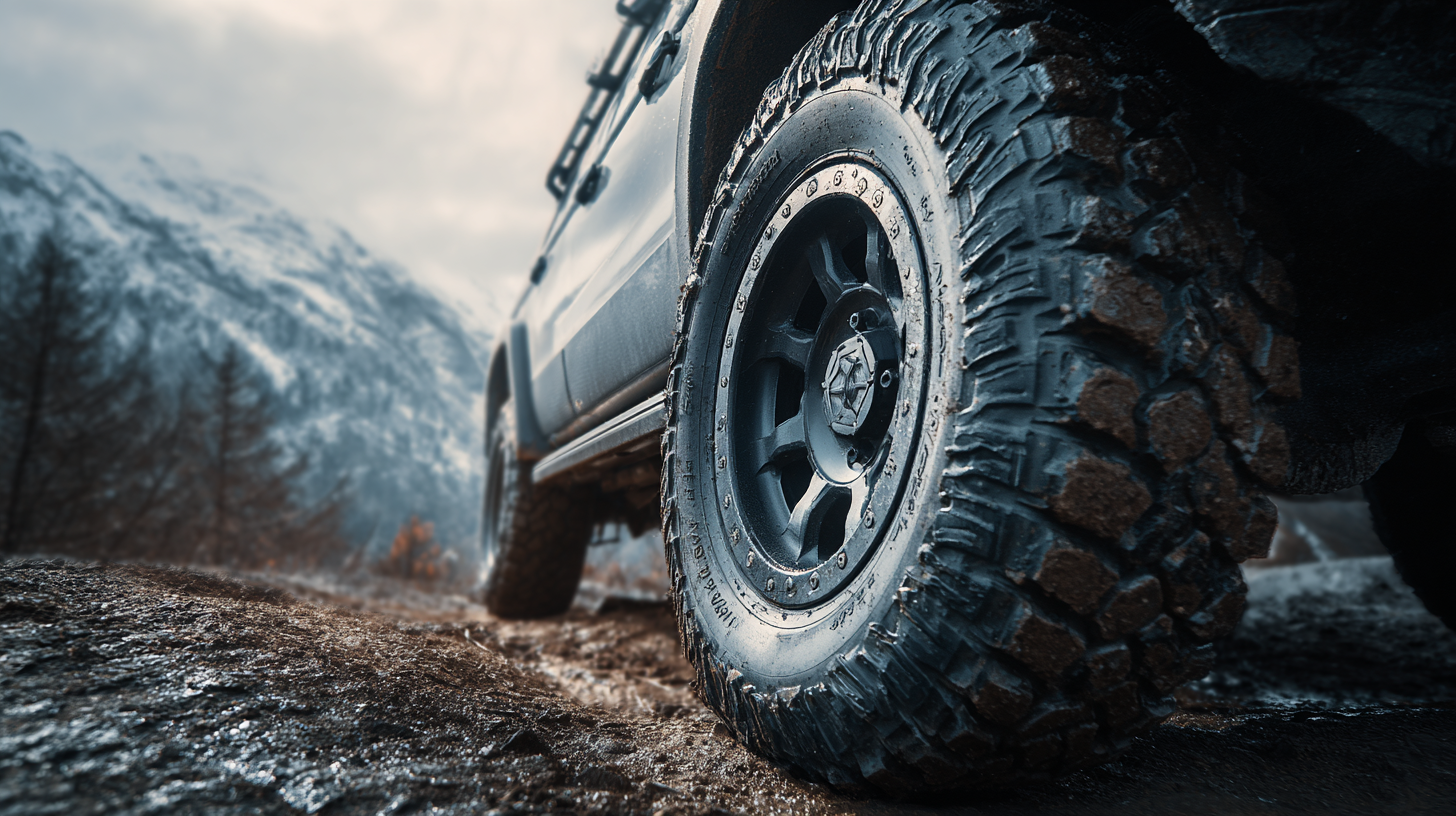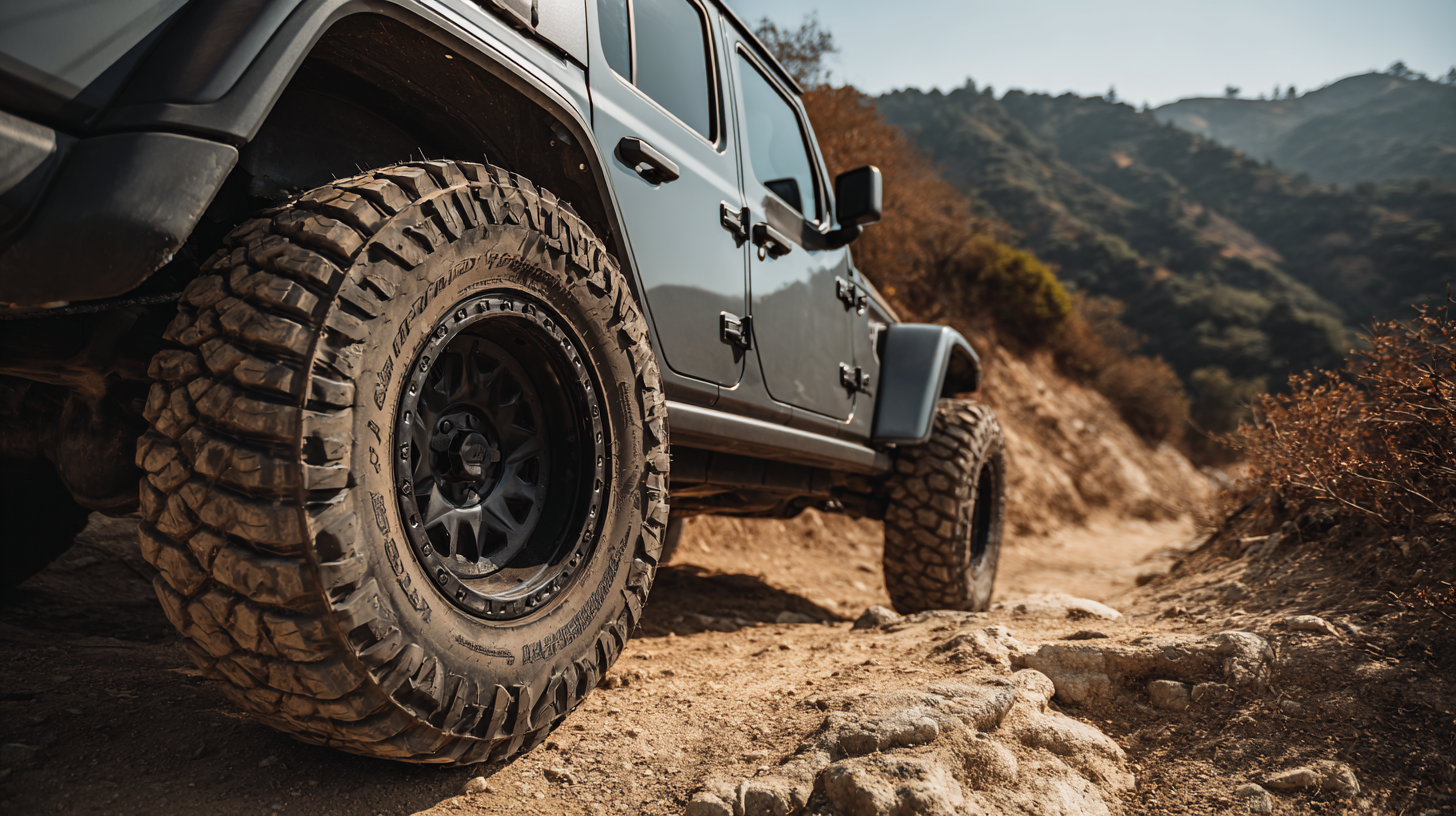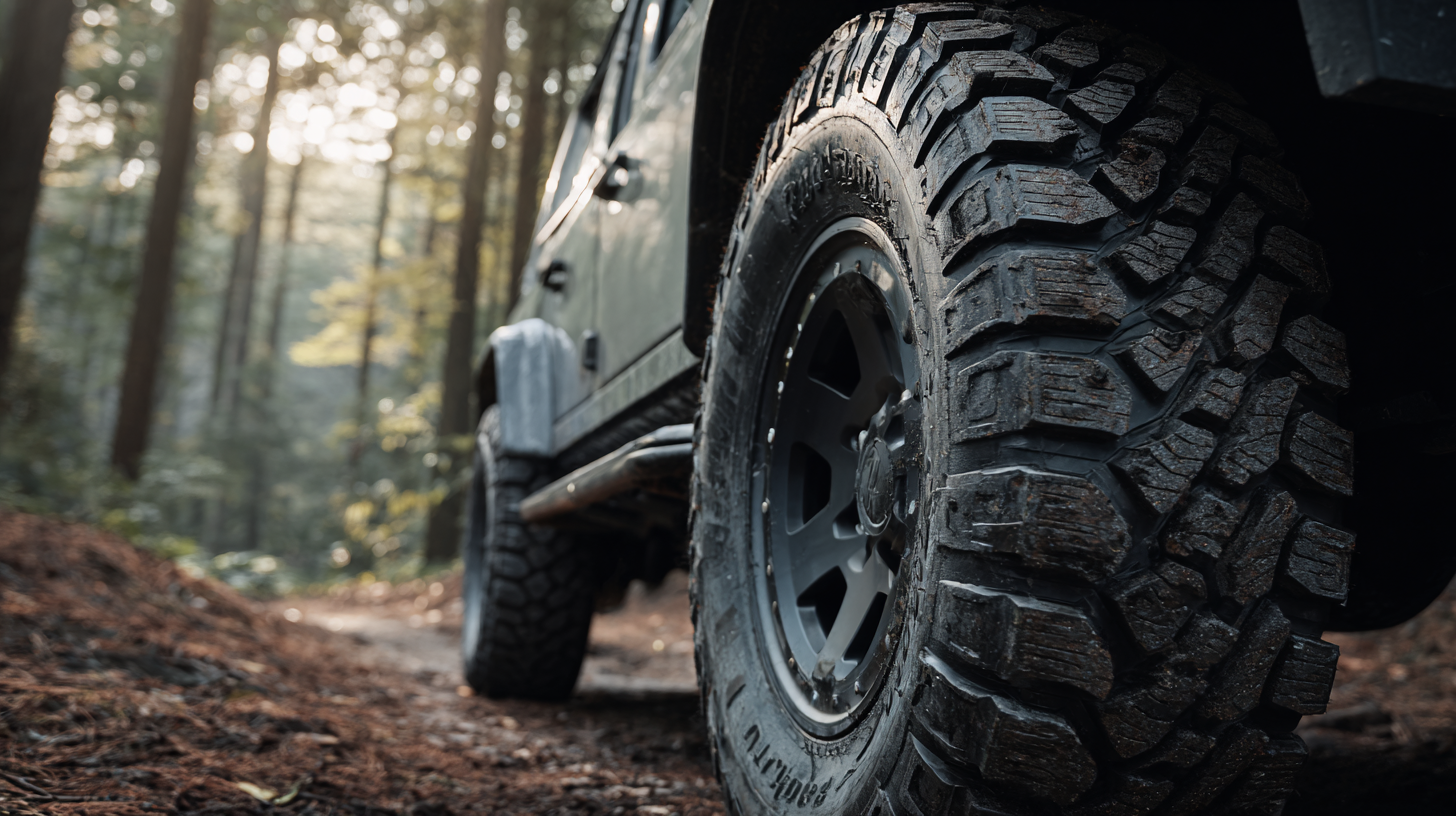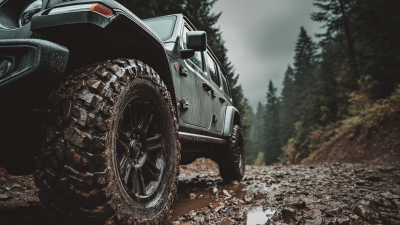14 Toro Road Toronto, Ontario
The Ultimate Guide to Choosing the Best All Terrain Tires for Every Adventure
 When it comes to off-road adventures, selecting the right all terrain tires can significantly enhance your vehicle's performance and your overall driving experience. According to a recent report by Tire Business, the all terrain tire market is projected to reach $20 billion by 2025, fueled by the rising popularity of outdoor activities and the growing demand for versatile automotive solutions.
All terrain tires are designed to provide optimal traction across diverse surfaces, making them ideal for both highway and off-road conditions. Moreover, data from the Rubber Manufacturers Association indicates that nearly 30% of light trucks and SUVs sold in the U.S. are equipped with all terrain tires, reflecting their increasing acceptance among drivers seeking adventure without compromising on comfort.
This guide will delve into the key factors to consider when choosing the best all terrain tires for your needs, ensuring every journey is comfortable and safe.
When it comes to off-road adventures, selecting the right all terrain tires can significantly enhance your vehicle's performance and your overall driving experience. According to a recent report by Tire Business, the all terrain tire market is projected to reach $20 billion by 2025, fueled by the rising popularity of outdoor activities and the growing demand for versatile automotive solutions.
All terrain tires are designed to provide optimal traction across diverse surfaces, making them ideal for both highway and off-road conditions. Moreover, data from the Rubber Manufacturers Association indicates that nearly 30% of light trucks and SUVs sold in the U.S. are equipped with all terrain tires, reflecting their increasing acceptance among drivers seeking adventure without compromising on comfort.
This guide will delve into the key factors to consider when choosing the best all terrain tires for your needs, ensuring every journey is comfortable and safe.
Understanding the Importance of All Terrain Tires for Off-Road Adventures
All terrain tires are an essential component for anyone looking to conquer off-road adventures. Their design features a blend of tread patterns which provide traction on diverse surfaces, from gravel and mud to sand and snow. According to the Tire Industry Association, approximately 41% of off-road vehicle owners prefer all terrain tires due to their versatility and durability. This adaptability not only enhances vehicle performance on trails but also improves safety by offering superior grip and handling.
Furthermore, a report from the Rubber Manufacturers Association indicates that all terrain tires can increase vehicle lifespan by minimizing tread wear, which is especially crucial for adventurous driving in rugged environments. These tires are engineered to withstand extreme conditions, boasting reinforced sidewalls that protect against punctures from sharp rocks and debris. As such, investing in high-quality all terrain tires is a critical decision for those eager to explore the untamed wilderness, ensuring they are equipped for whatever challenges lie ahead.
The Importance of All Terrain Tires for Off-Road Adventures
Key Features to Consider When Selecting All Terrain Tires
When selecting all-terrain tires, several key features should be prioritized to ensure maximum performance across various landscapes. First, tread design plays a crucial role, as it affects traction on different surfaces like mud, gravel, and snow. Look for tires with a balanced tread pattern that offers both aggressive bite for off-road conditions and a more optimized surface for highway use. Additionally, the depth of the tread should be considered; deeper treads provide better grip but might introduce noise and reduce fuel efficiency on paved roads.
Another important factor is the tire’s construction and durability. All-terrain tires should typically feature reinforced sidewalls to withstand the demands of rough terrains while minimizing the risk of punctures. Checking the rubber compound used in the tires is also vital, as a softer compound can enhance grip but wear out quickly on hard surfaces. Finally, consider the size and load rating of the tires, ensuring they match your vehicle’s specifications and adventure needs, allowing for both comfort and capability whether you're traversing rocky trails or navigating through snow.
The Ultimate Guide to Choosing the Best All Terrain Tires for Every Adventure - Key Features to Consider When Selecting All Terrain Tires
| Tire Feature | Importance | Recommended Types | Best Conditions |
|---|---|---|---|
| Tread Pattern | Essential for traction and stability | Aggressive, Symmetrical, or Asymmetrical | Mud, Snow, Rocky terrain |
| Sidewall Strength | Prevents punctures and damage | Reinforced Sidewall | Rugged trails and rocky conditions |
| Tire Size | Affects ground clearance and handling | Larger sizes for off-road | Deep mud and sand |
| Tread Depth | Increases traction in rough terrain | Deep tread for off-road | Mud, Dirt, Snow |
| Noise Level | Affects comfort during travels | Low noise tread designs | On-road use |
| Weather Resistance | Helps maintain performance in various conditions | All-weather tires | Rain, Snow, Mud |
Exploring the Different Tread Patterns and Their Impact on Performance
When it comes to choosing all-terrain tires, the tread pattern plays a pivotal role in determining performance across various surfaces. Different tread designs are optimized for specific conditions, such as mud, sand, or rocky terrains. For example, tires with more aggressive, deep lugs are better suited for off-road use, providing superior grip and traction. According to a study conducted by the Tire Industry Association, vehicles equipped with aggressive tread patterns can improve off-road traction by up to 40%, especially when navigating through loose or uneven surfaces.

In contrast, a more balanced tread pattern may offer improved handling and wear on paved roads, making it an excellent choice for those who frequently switch between on-road and off-road driving. Research from the Rubber Manufacturers Association indicates that tires with an all-terrain design can deliver approximately 20% better performance in everyday driving situations compared to dedicated off-road tires.
Understanding these dynamics is crucial for adventurers looking to enhance their driving experience, ensuring they select tires that not only meet their off-road aspirations but also perform reliably on highways and city streets.
Understanding Tire Size and Its Role in Off-Road Capability
When selecting all-terrain tires, understanding tire size is crucial to ensuring optimal off-road performance. Tire size is typically expressed in a series of numbers, such as 265/70R17, where each segment indicates specific dimensions. The first number denotes the width of the tire in millimeters, the second represents the aspect ratio (the height of the sidewall as a percentage of the width), and the last indicates the diameter of the wheel in inches. A larger tire can enhance ground clearance and provide better traction on uneven surfaces, which is essential for off-road adventures.
However, one must also consider the implications of tire size on vehicle handling and fuel efficiency. Larger tires may lead to increased rolling resistance, potentially affecting gas mileage. Moreover, they can alter the vehicle's gearing, impacting acceleration and speed. It’s important to find a balance between having sufficient clearance and maintaining good on-road driving characteristics. Therefore, when choosing all-terrain tires, it is not just about selecting the biggest size; it's about understanding how those dimensions will work together to enhance your vehicle’s overall performance in various terrains.

Evaluating Leading All Terrain Tire Brands Based on Performance Metrics
When selecting the best all-terrain tires for varied adventures, evaluating performance metrics across leading brands is essential. Industry reports reveal that tread design, rubber composition, and sidewall strength are critical factors influencing tire performance. For instance, according to a recent Tire Review survey, brands like BFGoodrich and Goodyear consistently rank high in traction across diverse surfaces, with BFGoodrich All-Terrain T/A KO2 achieving a 4.5 out of 5 rating in overall performance metrics for off-road capabilities.
Additionally, noise levels and ride comfort are significant considerations for drivers who traverse both rugged trails and smooth highways. The Consumer Reports' latest tire analysis highlights that the Michelin LTX A/T2 offers an impressive balance of on-road comfort and off-road grip, making it a top contender for those seeking versatility. Metrics indicate that the LTX A/T2 provides a noise reduction of up to 15% compared to other leading all-terrain tires, ensuring a quieter ride during highway journeys without compromising performance on uneven terrain.
Related Posts
-

Ultimate Guide to Choosing Off Road Snow Tires for Your Winter Adventures
-

Exploring Tire Places: Key Industry Trends from the 138th China Import and Export Fair 2025
-

Experience Unmatched Performance with Our Premium Sport Tires for Every Driving Enthusiast
-

The Ultimate Guide to Choosing the Right Tyre Shop for Your Vehicle Needs
-

Maximize Your Adventure: The Ultimate Guide to Choosing Off Road Tires for Every Terrain
-

5 Essential Benefits of All Terrain Tires: Elevate Your Vehicle's Off-Road Performance!

